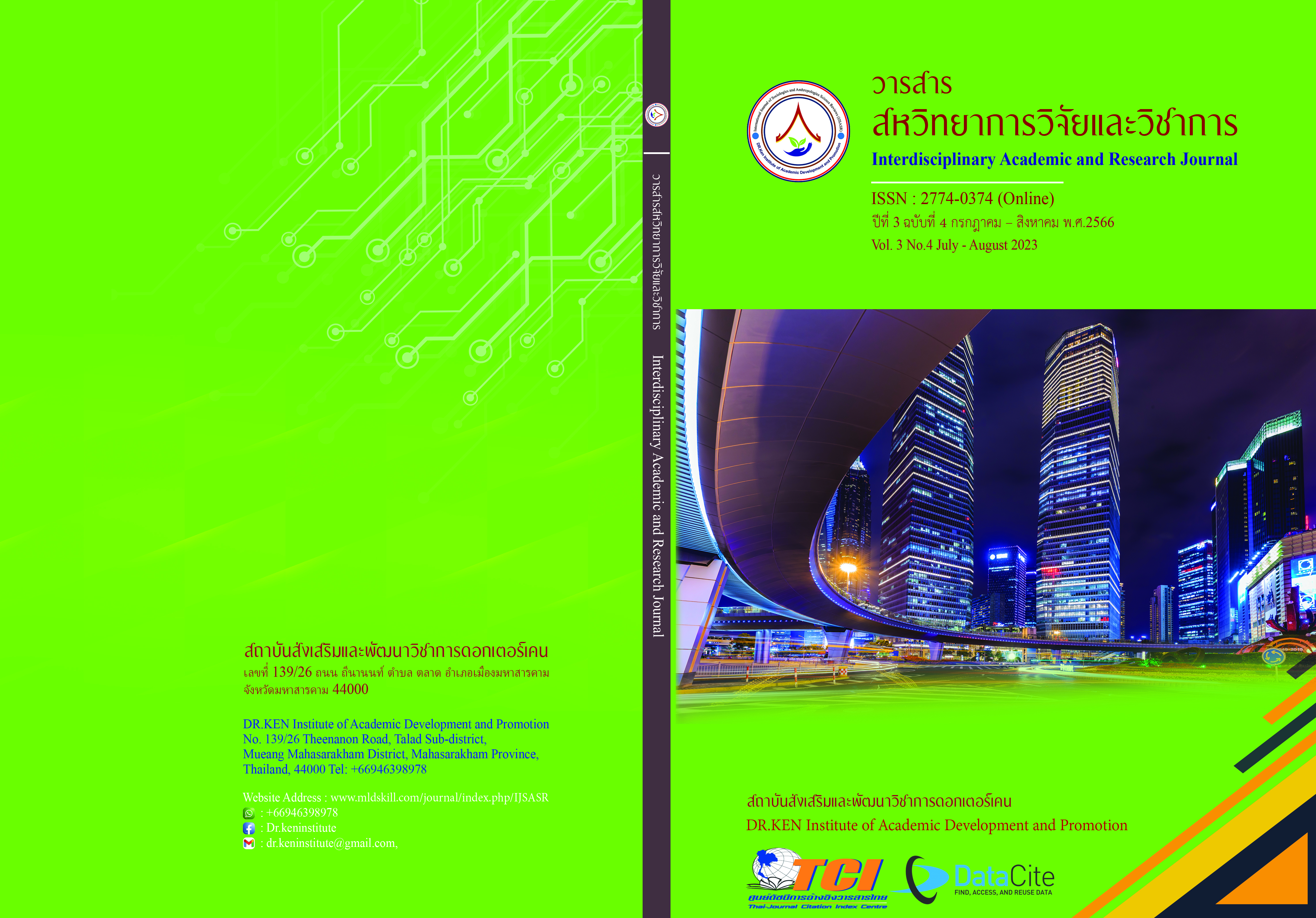Learning Achievements on Handball Basic Skills through the Instructional Plan of Davie’s Practical Skill for Grade 6 Students at Anuban Maha Sarakham School
DOI:
https://doi.org/10.14456/iarj.2023.226Keywords:
Learning Achievements; , Basic Skills for Handball; , Public MediaAbstract
Promoting exercise and basic sports to become a way of life by encouraging children, youth, the general public to have a correct understanding of exercise, first aid, and some sports that are necessary for life skills. The objective of this research is to promote physical activity and basic sports as a way of life by enhancing correct knowledge and understanding of exercise, basic first aid, and the importance of certain sports skills for life skills. This research aims to: (1) Determine the effectiveness of the Davie’s learning management plan for developing basic skills in handball, based on the 75/75 standard criteria. (2) Compare the learning outcomes before and after using a test measuring basic handball skills. (3) Explore the satisfaction level of students towards the Davie’s teaching approach for developing basic handball skills. The sample group consists of 42 Grade 6/2 students from Anuban Maha Sarakham school in the academic year 2022. The research tools used in this study include the Davie’s learning management plan, a test measuring learning outcomes of basic handball skills, a satisfaction questionnaire regarding the Davie’s teaching approach, and statistical analysis tools such as mean, standard deviation, and t-test. The research findings revealed that: (1) The effectiveness of the Davie’s learning management plan for developing basic handball skills had a score of 85.90/78.17, which was higher than the set criteria of 75/75. (2) The learning outcomes after using the Davie’s teaching approach were significantly higher than before, with statistical significance at the .05 level. And (3) student satisfaction with learning management about basic handball skills using Davie’s practical skills teaching model overall was at the highest level.
References
กระทรวงศึกษาธิการ. (2551). หลักสูตรแกนกลางการศึกษาขั้นพื้นฐาน พุทธศักราช 2551 กระทรวงศึกษาธิการ. กรุงเทพฯ : โรงพิมพ์ชุมนุมสหกรณ์การเกษตรแห่งประเทศไทย จำกัด.
ชัยยงค์ พรหมวงศ์. (2556). การทดสอบประสิทธิภาพสื่อหรือชุดการสอน. วารสารศิลปากรศึกษาศาสตร์วิจัย, 5 (1), 7-20
บาล ชะใบรัมย์ และอมรเทพ วันดี. (2565). การเปรียบเทียบรูปแบบการสอนของเดวีส์ และการสอนแบบปกติที่มีต่อทักษะการเคลื่อนไหวของเด็กชั้นประถมศึกษาปีที่ 3 โรงเรียนเทศบาล 3 จังหวัดบุรีรัมย์. วารสารวิชาการมหาวิทยาลัยการจัดการและเทคโนโลยีอีสเทิร์น, 1(4), 1-10.
บุญชม ศรีสะอาด. (2545). การวิจัยเบื้องต้น. พิมพครั้งที่ 7. กรุงเทพฯ : สุวีริยาสาส.
ปุญญิศา เมืองจันทึก และเหมมิญช์ ธนปัทม์มีมณี. (2565). การพัฒนาการเรียนการสอนทักษะปฏิบัติของเดวีส์ โดยวิธีการจัดการเรียนรู้แบบผสมผสานที่ส่งเสริมผลสัมฤทธิ์ทางการเรียนและทักษะปฏิบัติสำหรับนักเรียนชั้นมัธยมศึกษาปีที่ 1. วารสารเทคโนโลยีและสื่อสารการศึกษา, 5(15), 7-22.
มหาวิทยาลัยการกีฬาแห่งชาติ กระทรวงการท่องเที่ยวและกีฬา. (2563). ยุทธศาสตร์มหาวิทยาลัยการกีฬาแห่งชาติ พ.ศ. 2561-2565 (ฉบับทบทวน) ประจำปีงบประมาณ พ.ศ. 2563. ชลบุรี : มหาวิทยาลัยการกีฬาแห่งชาติ.
โรงเรียนอนุบาลมหาสารคาม. (2556). หลักสูตรของโรงเรียนอนุบาลมหาสารคาม. มหาสารคาม : โรงเรียนอนุบาลมหาสารคาม.
สมปรารถนา ทองนาค. (2558). การพัฒนาชุดกิจกรรมการฝึกทักษะพื้นฐานกีฬาแฮนด์บอล โดยใช้รูปแบบการเรียนการสอนทักษะปฏิบัติของเดวีส์ สำหรับนักเรียนระดับ มัธยมศึกษาตอนต้น โรงเรียนมัธยมท่าแคลง จังหวัดจันทบุรี. จันทบุรี : มหาวิทยาลัยราชภัฏรำไพพรรณี.
สานิตย์ เอี่ยมผู้ช่วย นัยนา บุพพวงษ์ และสุพัชริน เขมรัตน์. (2561). แรงจูงใจในการเล่นกีฬาแฮนด์บอลของนักกีฬาแฮนด์บอลสถาบันการพลศึกษา กระทรวงการท่องเที่ยวและกีฬา. วารสารวิชาการ สถาบันการพลศึกษา, 10(3), 1-12.
Davies, I.K. (1971). The Management of Learning. London : McGraw - Hill.
Downloads
Published
How to Cite
Issue
Section
License
Copyright (c) 2023 Kumpang Sritowpakdee, Nittaya Tongjunhard, Prapansak Dechsri , Sirinthon Jatuchai, Kanjana Waengwan

This work is licensed under a Creative Commons Attribution-NonCommercial-NoDerivatives 4.0 International License.
Copyright on any article in the Interdisciplinary Academic and Research Journal is retained by the author(s) under the under the Creative Commons Attribution-NonCommercial-NoDerivatives 4.0 International License. Permission to use text, content, images, etc. of publication. Any user to read, download, copy, distribute, print, search, or link to the full texts of articles, crawl them for indexing, pass them as data to software, or use them for any other lawful purpose. But do not use it for commercial use or with the intent to benefit any business.
















.png)


